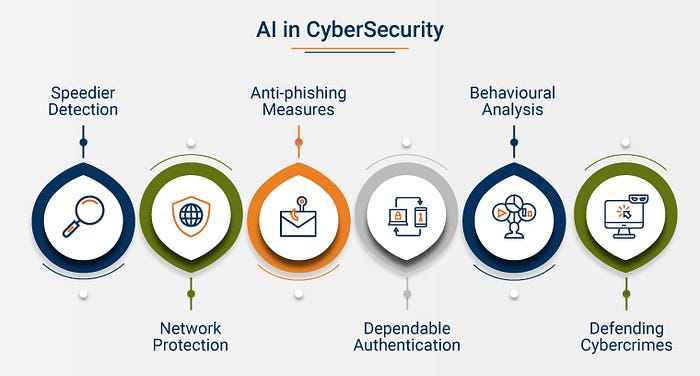How AI Can Supercharge “Secure by Design”

The concept of “secure by design” isn’t new in the software development world. It emphasizes building security into the core of a product from the very beginning, rather than as an afterthought. This proactive approach is more important than ever as AI continues to reshape our technological landscape. While there is a long debate and discussion going on about the threat AI can bring to the data and digital landscape, let us take a different approach of riding the beast, where AI can help us supercharge our security, where AI itself can be a powerful tool for fortifying “secure by design” principles.

Threat Modelling on Steroids
Traditionally, threat modelling involves manually identifying potential vulnerabilities in a system. AI can automate this process, analyzing vast amounts of data to identify attack patterns. Tools like ThreatModeler and Maul leverage machine learning to analyze code and configurations, identifying common vulnerabilities and potential attack vectors. They can also integrate with threat intelligence platforms like Cybereason XDR or McAfee Advanced Threat Defense to incorporate data on the latest threats and attack methods.
Data Defense with AI-powered Guardians
Data is the lifeblood of AI, and its security is paramount. AI can be trained to detect anomalies in data streams using tools like Darktrace Antigena. This system analyzes user behavior and network activity to identify suspicious patterns that might indicate a data breach. Additionally, AI can be used for data anonymization with tools like AnonyMiser which obfuscates sensitive information while preserving its analytical value.
AI-powered Security Monitoring
Security breaches often go unnoticed for extended periods. AI can continuously monitor system activity, network traffic, and user behavior with tools like Splunk or ELK Stack. These platforms integrate with AI-powered security analytics tools like Securonix SIEM or Rapid7 InsightIDR to identify suspicious patterns that might indicate a security incident. This real-time monitoring allows for quicker response times and minimizes potential damage.
Self-healing Systems with AI at the Helm
Imagine a system that can not only detect a security breach but also take corrective actions. AI-powered systems can be designed to automatically patch vulnerabilities with tools like BigFix or Tenable Patch Management. Additionally, AI can isolate compromised components using security orchestration and response (SOAR) platforms like McAfee AutoFocus or Palo Alto Networks Cortex XSOAR. These platforms can trigger counter-measures like quarantining infected devices or shutting down compromised systems to thwart ongoing attacks.
AI-powered Security Awareness Training
Even the most secure systems can be compromised by human error. AI can personalize security awareness training for employees using tools like KnowBe4 or HPhisher. These platforms leverage AI to identify knowledge gaps in user security awareness and tailor learning experiences to address those gaps. This can significantly reduce the risk of social engineering attacks and phishing scams.
Challenges and Considerations
While AI offers immense potential for secure by design, there are challenges to consider:
- AI Bias: AI models trained on biased data can perpetuate those biases in security decisions. Careful data selection and bias mitigation techniques are crucial. While this is applicable for any AI implementation, security is a field opportunity could turn risk at a higher rate.
- Explainability of AI: In complex security scenarios, it’s essential to understand why an AI system flags a particular threat. Explainable AI techniques can help developers interpret AI-driven security decisions. The variables deployed in assessing the security scenarios and the suggestions following to solve the problem have to be clearly vetted and agreed such that it doesn’t create loop holes due to insufficiency of information.
- The Evolving Threat Landscape: AI-powered security needs to adapt to new threats and attack vectors. Continuous learning and improvement of AI models are vital. Again, continuous learning is generic for any AI/ML models, in the cybersecurity landscape it is essential for it to learn frmo failures as well. Simulation tests and creating failure scenarios and constantly training the model catalyses this approach.
The biggest question here is “How do organizations prioritize these strategies and translate them into tangible business benefits?” Let us look at the prioritization process and explore the commercial outcomes for medium and large-scale organizations, while adopting a secure by design approach using AI.
Prioritization Framework:
- Risk Assessment: Identify your organization’s critical assets and data. Analyse potential security threats and their impact on business continuity and reputation. Tools like IBM X-Force Threat Intelligence can provide valuable insights into the current threat landscape.
- Maturity Assessment: Evaluate your current security posture. How well are security considerations integrated into your development lifecycle? Tools like the Building Security In Maturity Model (BSIMM) can help assess your organization’s security engineering practices.
- Resource Allocation: Based on the risk assessment and maturity evaluation, prioritize AI-powered security solutions that address your most critical vulnerabilities. Consider factors like cost, ease of integration, and scalability.
Business Outcomes for Medium and Large scale organisations
For Medium-Sized Organizations:
- Reduced Security Costs: Automating threat modeling and security monitoring with AI can free up IT staff to focus on higher-level tasks. This translates to cost savings and improved operational efficiency.
- Enhanced Agility and Innovation: Secure by design with AI streamlines development processes by identifying and addressing security concerns early on. This allows for faster product development cycles and quicker time-to-market.
- Improved Customer Trust: Demonstrating a commitment to data security through “secure by design” fosters trust with customers and partners. This can lead to increased brand loyalty and a competitive advantage.
For Large-Scale Organizations:
- Reduced Compliance Risk: AI-powered security solutions can help large organizations comply with a complex web of industry regulations and data privacy laws. This translates to reduced fines and legal costs.
- Improved Brand Reputation: Data breaches can be devastating for large organizations. Secure by design with AI minimizes the risk of breaches and safeguards brand reputation.
- Enhanced Operational Resilience: Large organizations often manage vast and complex IT infrastructures. AI-powered security can help identify and address vulnerabilities across the entire infrastructure, improving overall operational resilience.
Where by 2027?
By 2027, organizations prioritizing Secure by Design with AI can expect a quantum leap in security posture. AI-powered automation could slash security breach rates by 50%, while streamlining development lifecycles by 20%. This, combined with a more secure digital ecosystem, could translate to billions saved globally from cybercrime. Explainable AI will ensure human oversight, while the strategy becomes a core business function informing decisions from product development to risk management. Challenges include mitigating AI bias and keeping pace with evolving threats. Addressing the talent gap in AI security expertise will be crucial. Overall, Secure by Design with AI has the potential to revolutionize security, making organizations not just safer, but also more efficient and innovative.
A Holistic approach beyond cost savings
While cost savings are a significant benefit, secure by design with AI shouldn’t be solely viewed as a cost-cutting measure. It’s a strategic investment that fosters innovation, strengthens customer trust, and ultimately drives business growth. By prioritizing secure by design with AI, organizations of all sizes can build a strong foundation for a secure digital future. This proactive approach not only mitigates security risks but also unlocks a range of commercial benefits. As AI technology continues to evolve, the possibilities for secure by design will only become more extensive, paving the way for a more secure and trustworthy digital landscape.







